
With the All-Star game tomorrow I thought it would be a good time to look at All-Star cards over the years. I took a look through my cards as well as a journey through the interwebs to see what I could find out about these special little snowflakes (that sometimes aren’t so special). I focused my efforts prior to 1995 for the most part. Topps was the only manufacturer I really worried about.
All-Star Cards Over the Years
After a look back through some cards I realized that these go back further than I thought. In fact after a little digging it looks like Topps introduced the Base Set All-Star (we’ll call it the BSAS) in 1958. We’ve seen sponsorship, puzzles, cartoons, dueling All-Stars,… many different ways the All-Star has been portrayed. The design choices have been anywhere from boring to busy.
Topps produced BSAS cards from 1958-1962, then took a break from the practice. They brought it back in the late 60’s only to take another short break (from what I could tell). Once they brought it back is was hear to stay for quite a while until the insert card kind of took over in the late 1990’s. Most design choices that I could find ran for a few years at a time and then changed up and ran for another few years after that. It seems as though they would develop a system they liked and then they would get bored and change it up.
Topps All-Star Card Designs and Features
As I said, BSAS cards have been handled in several different ways over the years. These are some of the different things you’ll notice about these BSAS cards:
Sponsorships
In the early years of BSAS cards (1958-1970), these cards were sponsored. The first four years went back and forth between Sport Magazine and The Sporting News. The first BSAS cards included a write-up on the back from the editors of Sport Magazine and also included the players stats against the other teams in their league. With interleague play, I don’t know that that’s something that’s worth doing anymore. In addition to the sponsor on the front, 1959’s cards actually included a comic on the back with a Bazooka logo (a Topps company).
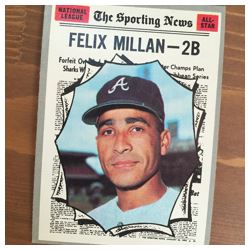
Individual Cards v. Dueling All-Stars
Individual cards is the standard idea – one player per card with their league and position and denote they are an “All-Star.” Sometimes this mean two cards for the player in each set (for example from 1975-1981). After 1982 the BSAS was more of an extra card. But the idea of dueling All-Stars has popped up a couple times. In 1974 (and 1993-1995) Topps put All-Stars for each position on a card for each league. For instance, the AL shortstop and the NL shortstop on one card. They did this with all of the All-Star starters and then a left-handed and right-handed pitcher. I kind of like this idea, especially as a way to spice up the set. The backs of the cards would include information about each player.
Card Backs and Puzzles
Like many old cards, the All-Star cards back in the day might include a comic (as mentioned earlier). But another idea for 1968, 1969, and 1974 was to make a puzzle using the backs of the cards. The puzzles were made up of 10 cards and depicted Yaz in both years and then Orlando Cepeda in 1968 and Pete Rose in 1969 (Bobby Bonds had an eight card puzzle in 1974). I don’t think that’s happened since unless you are looking the Topps Heritage or maybe Topps Archives sets (where they are just replicating the idea from the set they are paying tribute to). I like the puzzle idea as you’ve already got a card from the player already with some stats, and it changes up the backs while you are looking through them.
For many years in the 80’s and 90’s the backs included some information about the player on one side, then a list of “Leaders” in a particular stat on the other side. Sometimes the player was part of that list, sometimes they weren’t. One of my favorite backs to a BSAS card is in 1983 where Topps included information about “Great All Star Games.” The Gary Carter All-Star card included information about the 1971 game at Tiger Stadium. I like this idea a lot, however, I don’t feel like there is much rhyme or reason for what games went on the cards.
American League v. National League Designs
I don’t want to talk politics, but this is usually a red v. blue thing. I think the AL tends to get treated with red and the NL with blue. That’s not across the board, but if they change up the design, it’s usually the color. In some years they even include the AL and NL logos on the cards. However, in 1969 and 1981 the National League had green as their color.
Minimal Card Redesign v. Within The Theme Redesign v. All-Star Designs
Some BSAS cards have minimal design differences to the main part of the base set while others are done within the theme of the base set, and yet others are completely different (although still maybe within the team). Some of this depends on if the card is the player’s only card in the set or if there is a new card to represent him as an All-Star. Usually this means put a star and noted “<League> All-Star” and the position, like in 1975. Other years, such as 1981, they just put colored bar that say “<AL or NL> All-Star”.
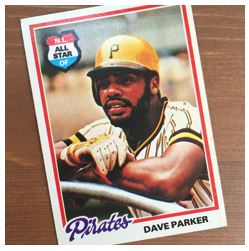
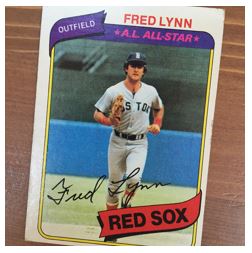
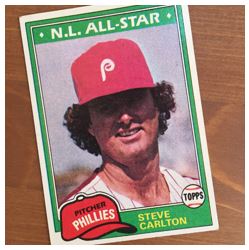
Some good examples of years where there wasn’t much difference are 1984-1986. Everything else is almost the same as the rest of the base set. I find this to be the worst of the three because normally their is an All-Star card and a base card for that player in the set.
The “Within The Theme” redesign can be interesting. Sometimes it’s pulled off better than others. I think the 1982 Topps set is a good example of this. The design is largely the same as the base with the lines coming down the left side of the card and swinging across the bottom of the cards. But for the BSAS they added stars and specifically noted “All Star” above their names. Other examples are from 1968, 1983, 1987, 1991 and 1992 (1986 just goes to show you that this doesn’t mean it’s very exciting).
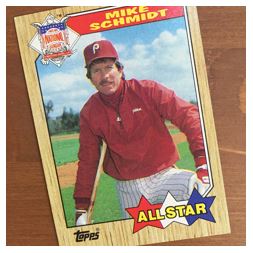
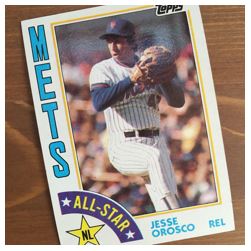
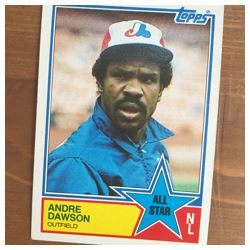
Examples of a complete redesign are 1958 (the first BSAS) – 1961, 1969 and 1993-1995. I usually like a complete redesign as well as the “Within The Theme” idea. The BSAS should be a special card and not just another card.
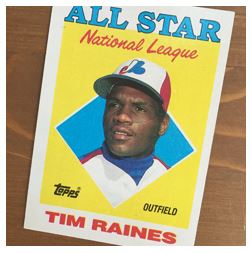
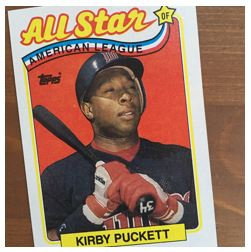
Round the Bases and Back Again
After that journey I can definitely tell you that I miss a lot of those cards. I feel like there isn’t as much thought into the All-Star cards of today (Just put “All Star Game” and the All Star Game logo on there). I enjoy Topps’ Heritage and how those come out a lot. But any time I want to get a look see at these all it takes is digging through a box.